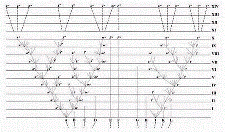Today
is Evolution Day, marking the anniversary of the first publication of Charles
Darwin’s On the Origin of Species in 1859.
Darwin’s work is widely considered to be the very foundation of evolutionary
biology, introducing the theory that populations evolve over the course of
generations by means of natural selection. Darwin proposed that all life
on earth arose by common descent via a branching pattern of evolution;
presented as a metaphor he called the ‘Tree of Life’. For more information, see ‘Trees and networks before
and after Darwin’, placing Darwin’s trees in a historical context.
The
Tree of Life, although remaining an attractive representation of evolutionary
processes and patterns, has been greatly challenged by the discovery of
extensive horizontal gene transfer in bacteria, archaea and other organisms.
A recent
thematic series in Biology Direct,
‘Beyond the Tree of Life’, reflects on the future of Tree of Life studies, showcasing
advances in methods and concepts relating the Tree of Life and its phylogenetic
legacy.
An
area of much recent interest is Darwin’s theory that “all the organic beings
which have ever lived on this earth descended from some one primordial form”,
as although it is widely accepted and supported by a range of qualitative
molecular evidence, there remain many unanswered questions.

<w:LsdException Locked="false" Priority="64" Sem
Liz Bal
Latest posts by Liz Bal (see all)
- Why neuroscience needs neuroinformatics: a Q+A with Helena Ledmyr - 15th March 2016
- How can we advance data sharing in dementia research? - 9th October 2015
- Podcast: Understanding the links between sex/gender and autism - 26th May 2015
Comments